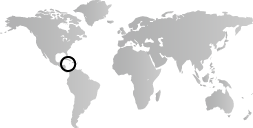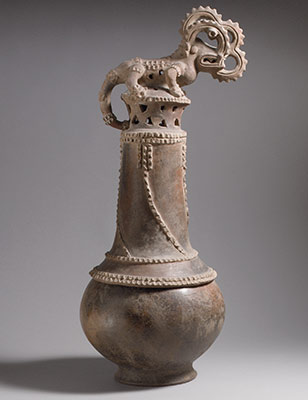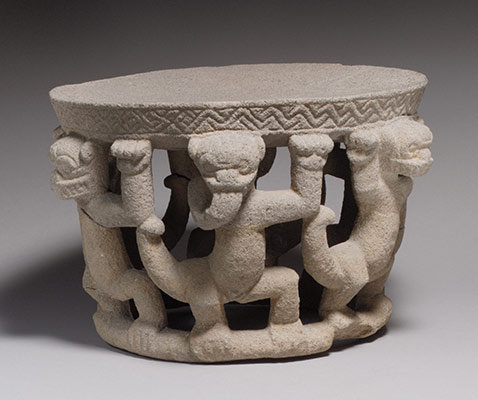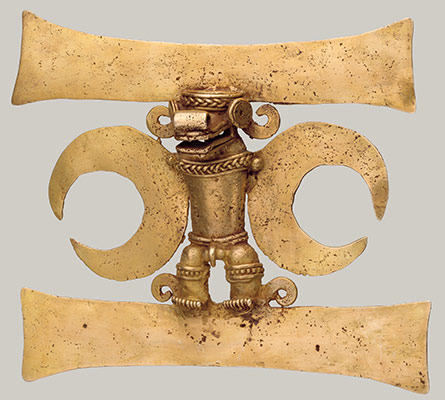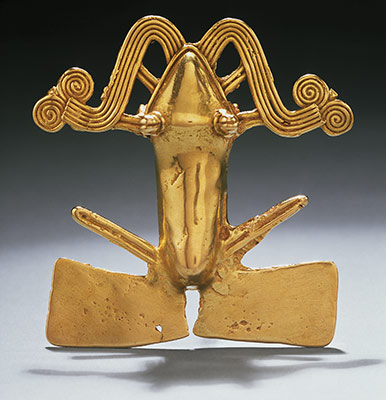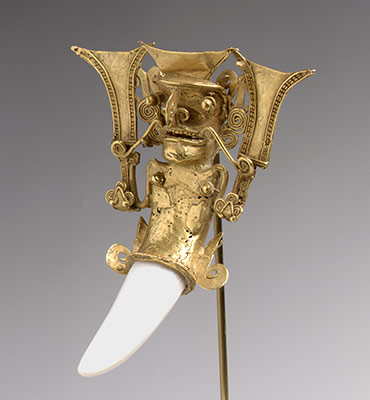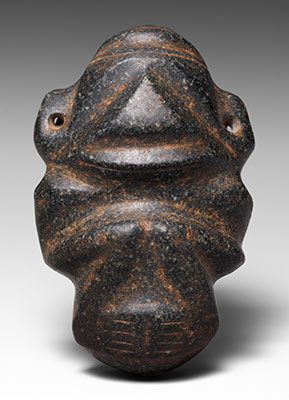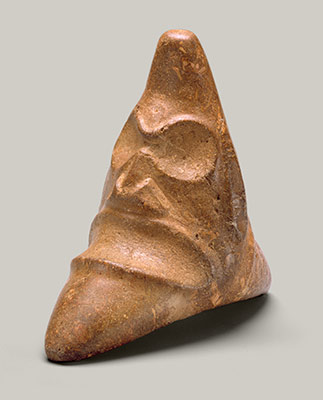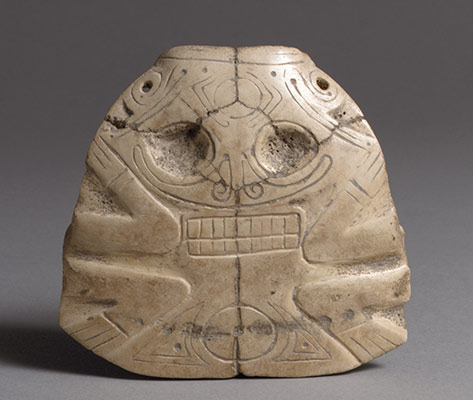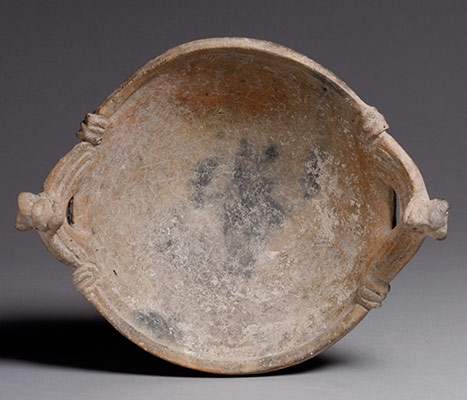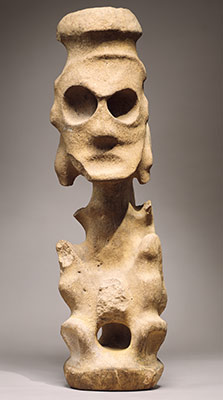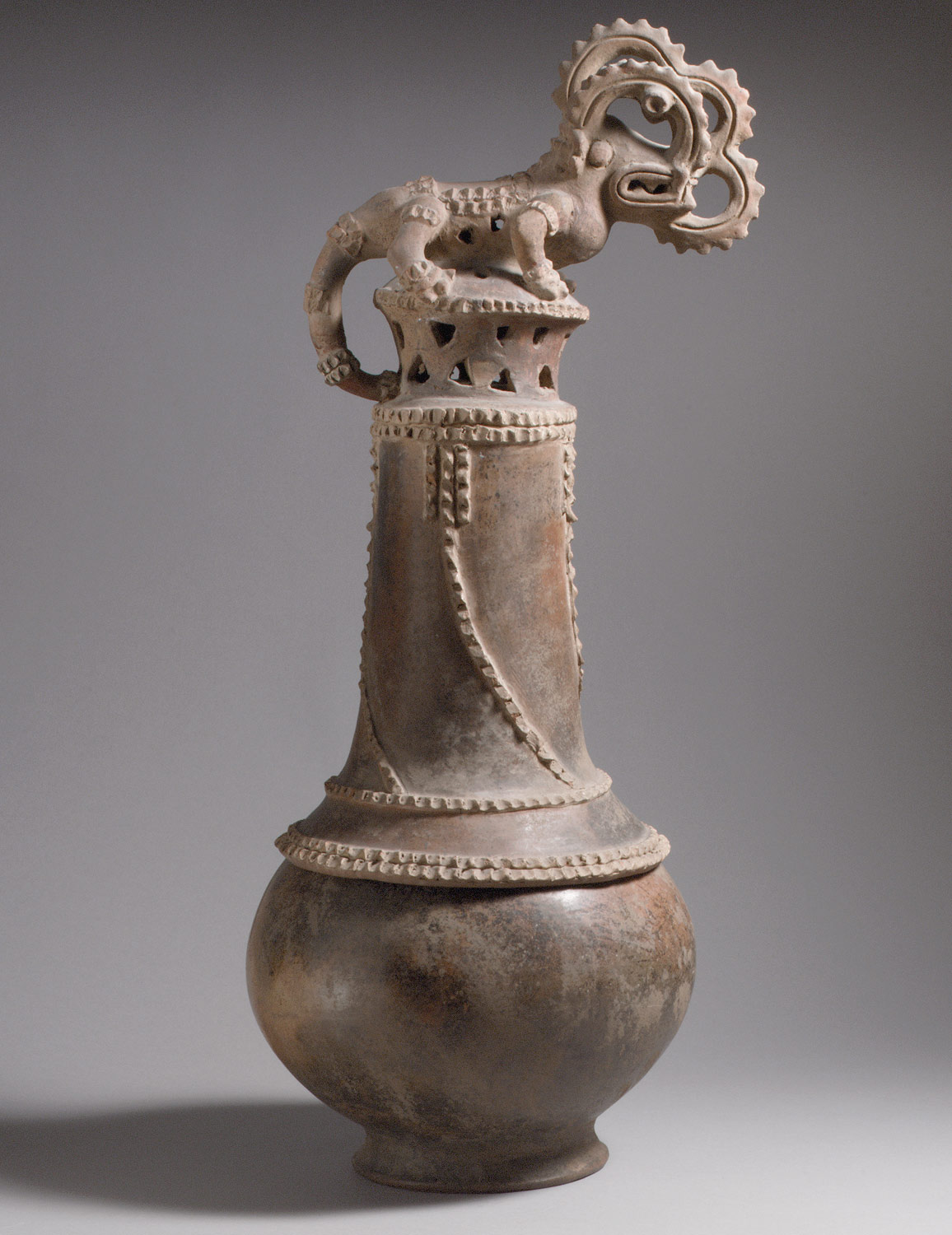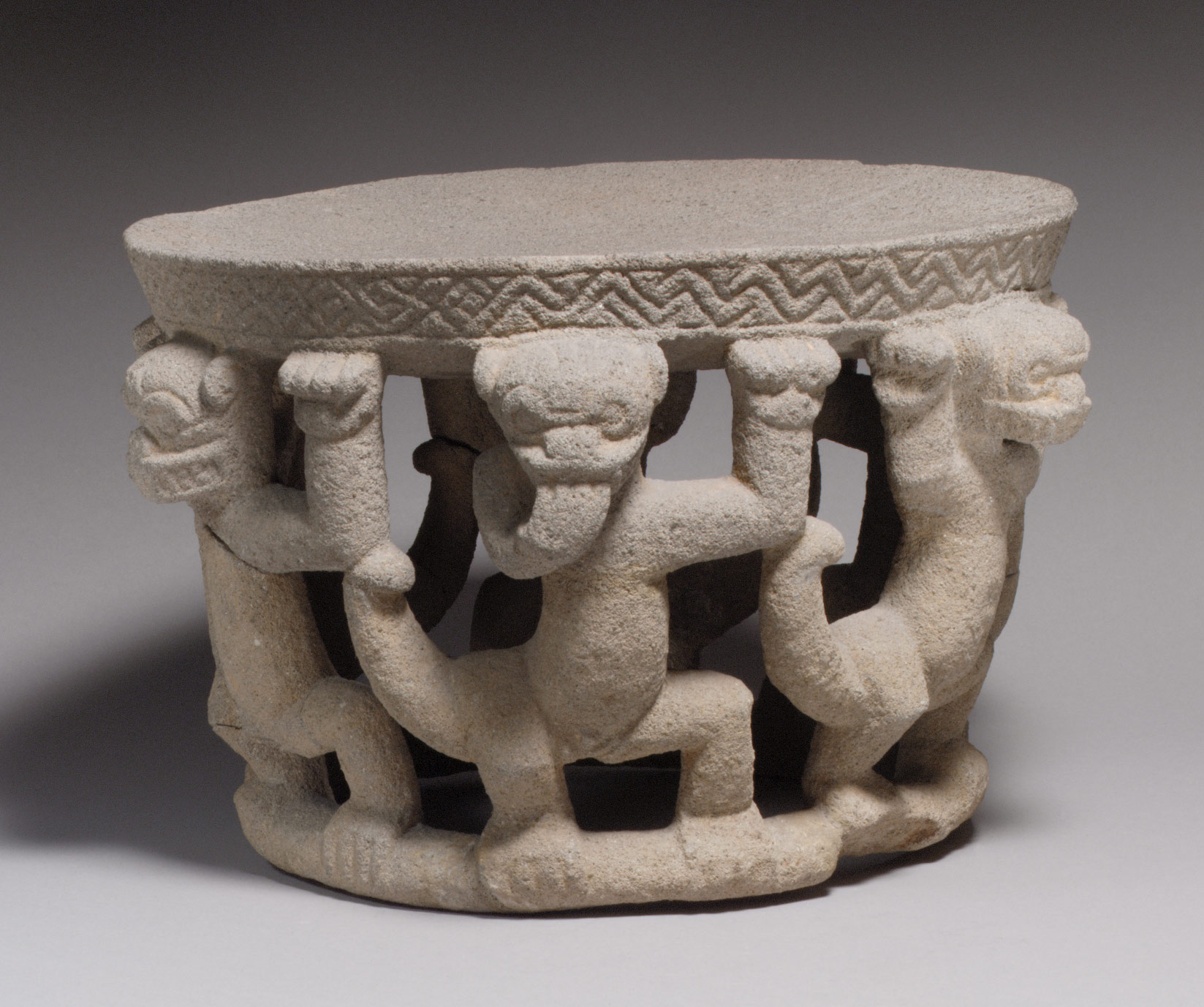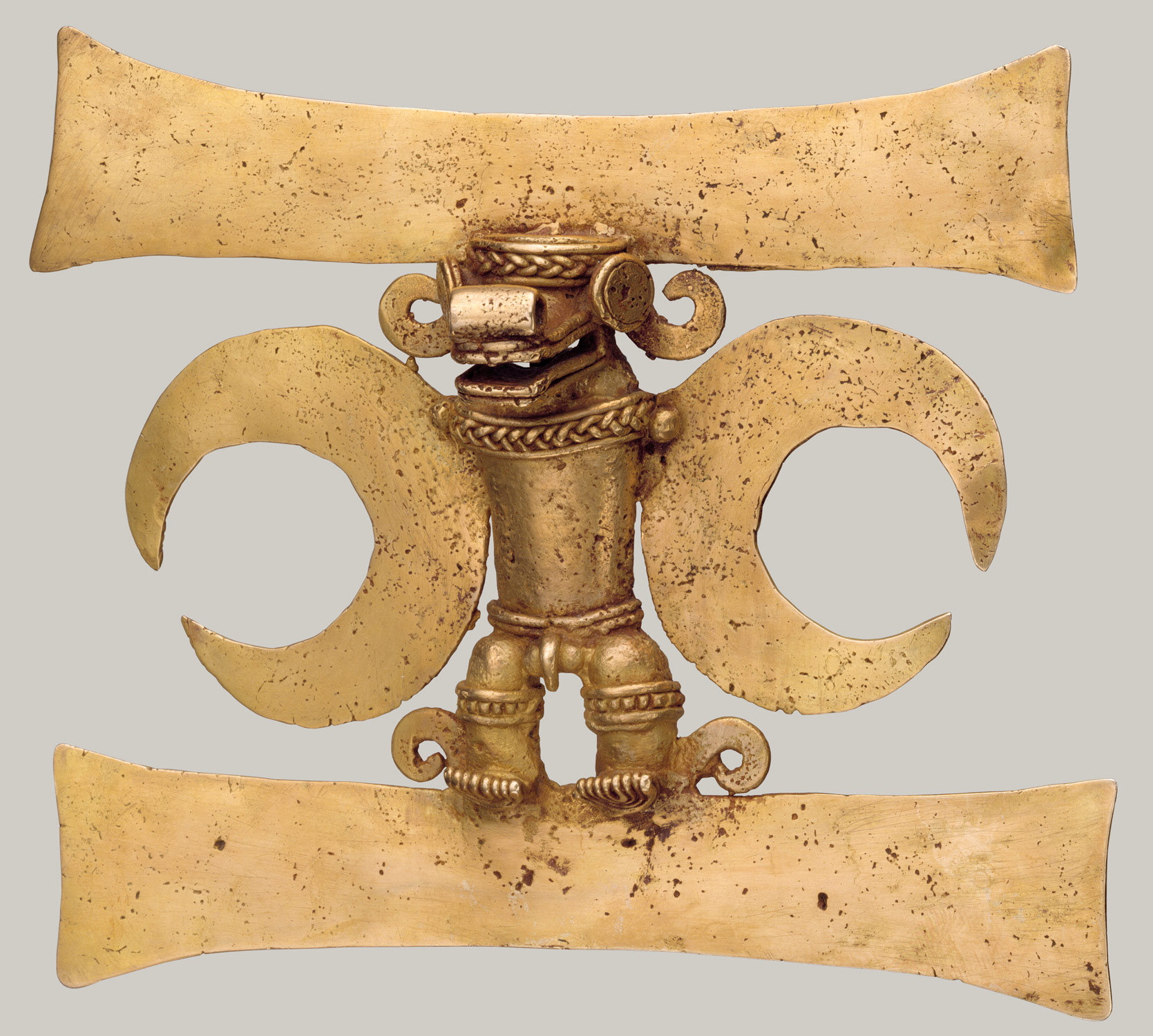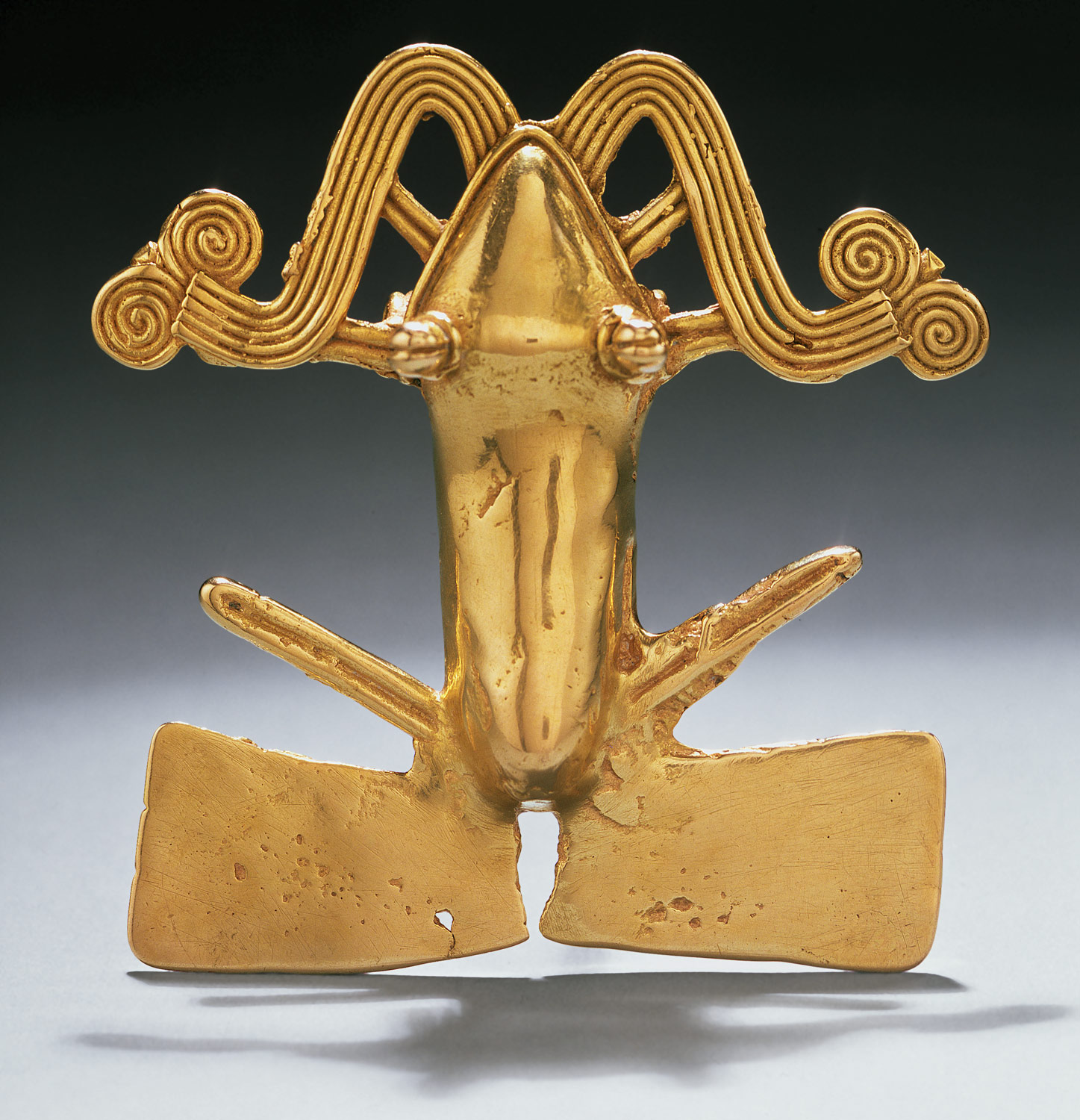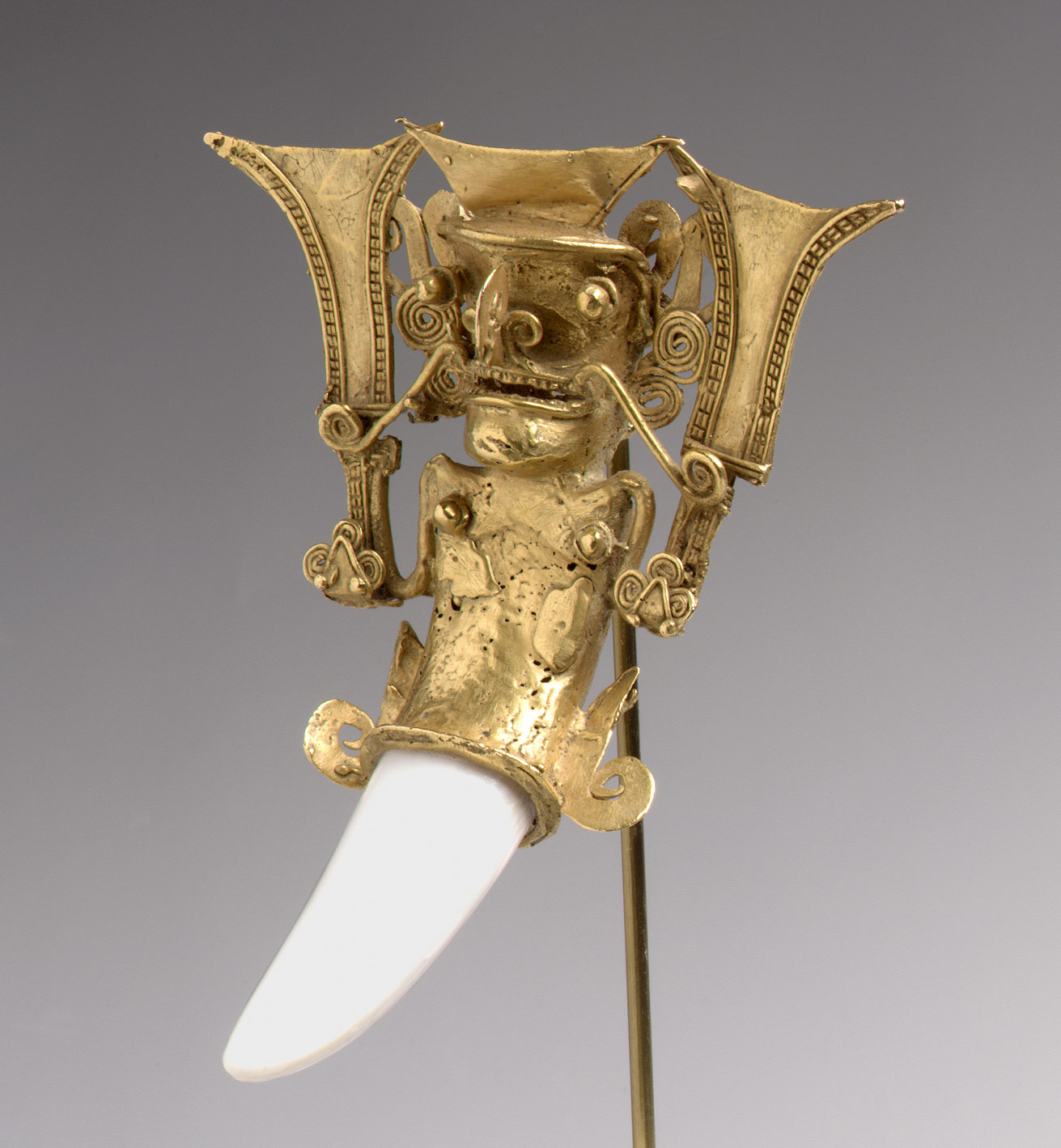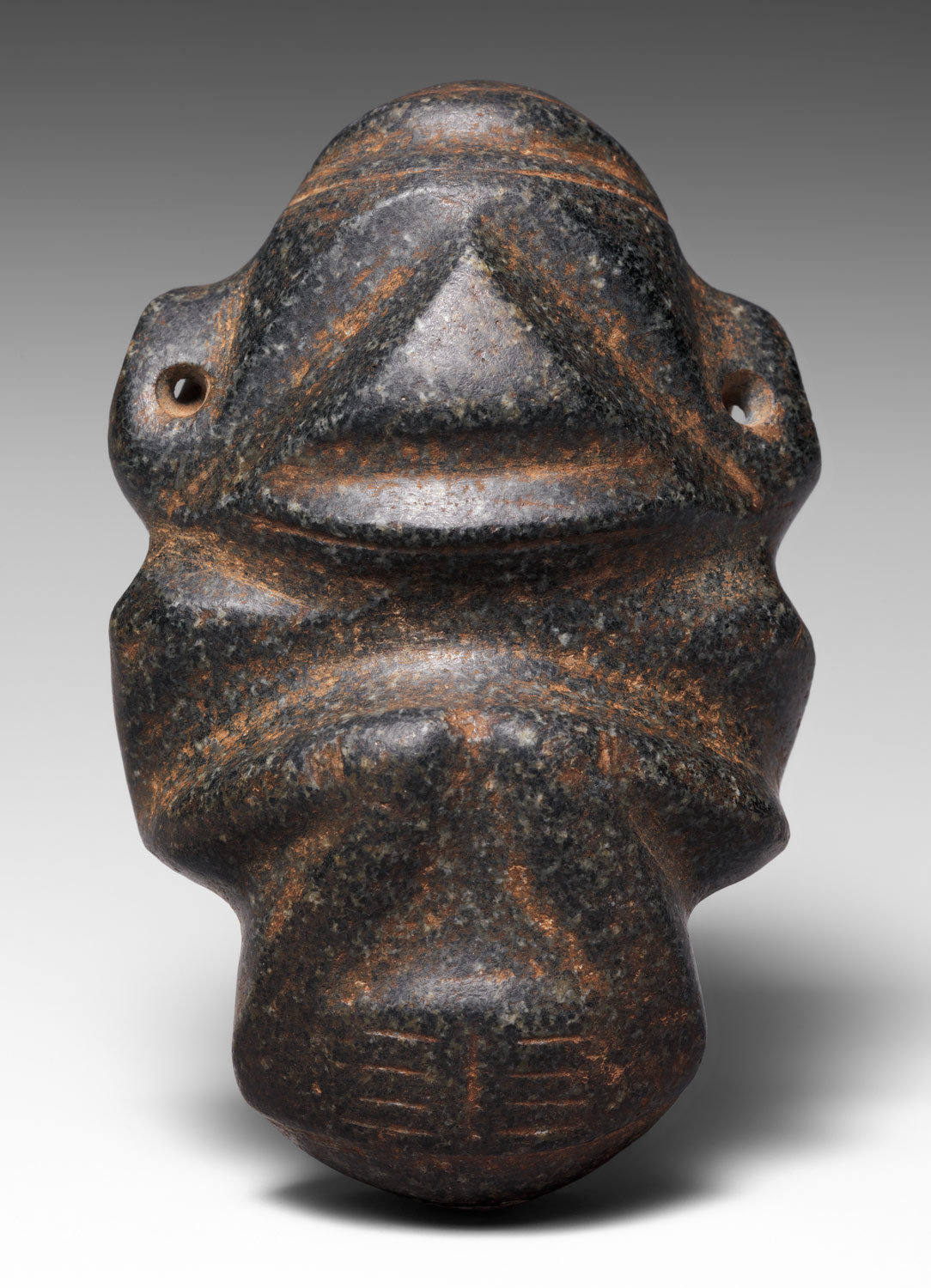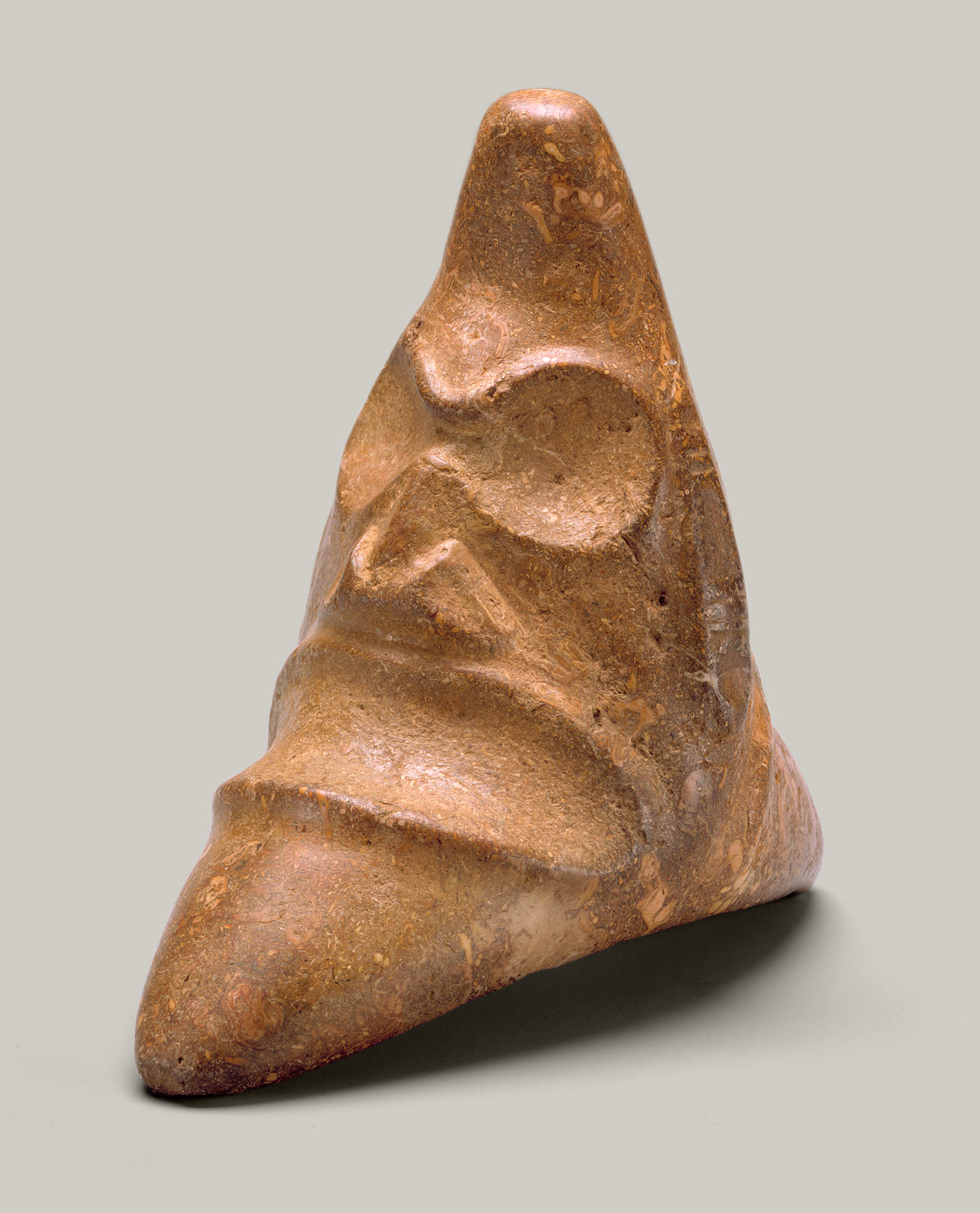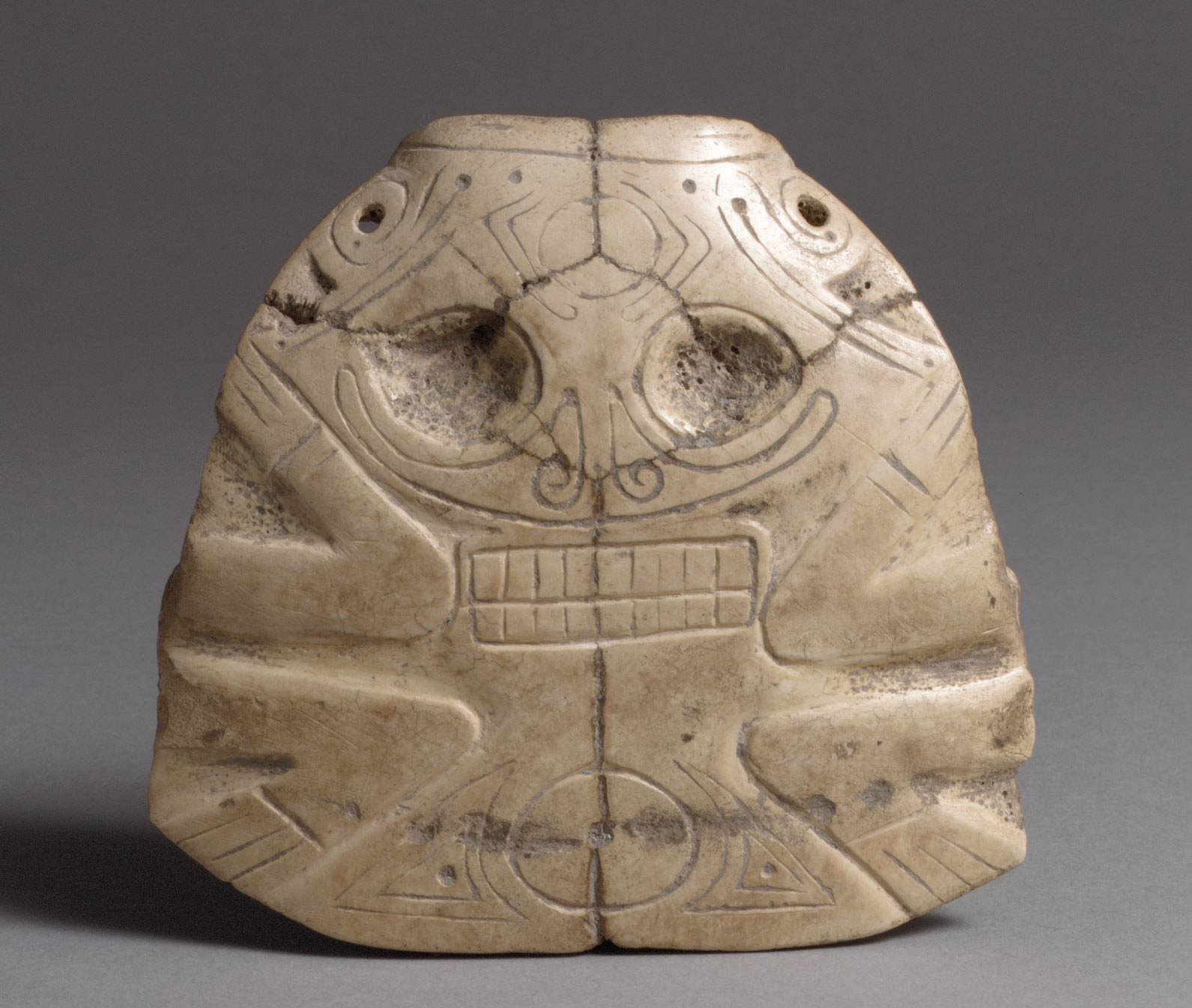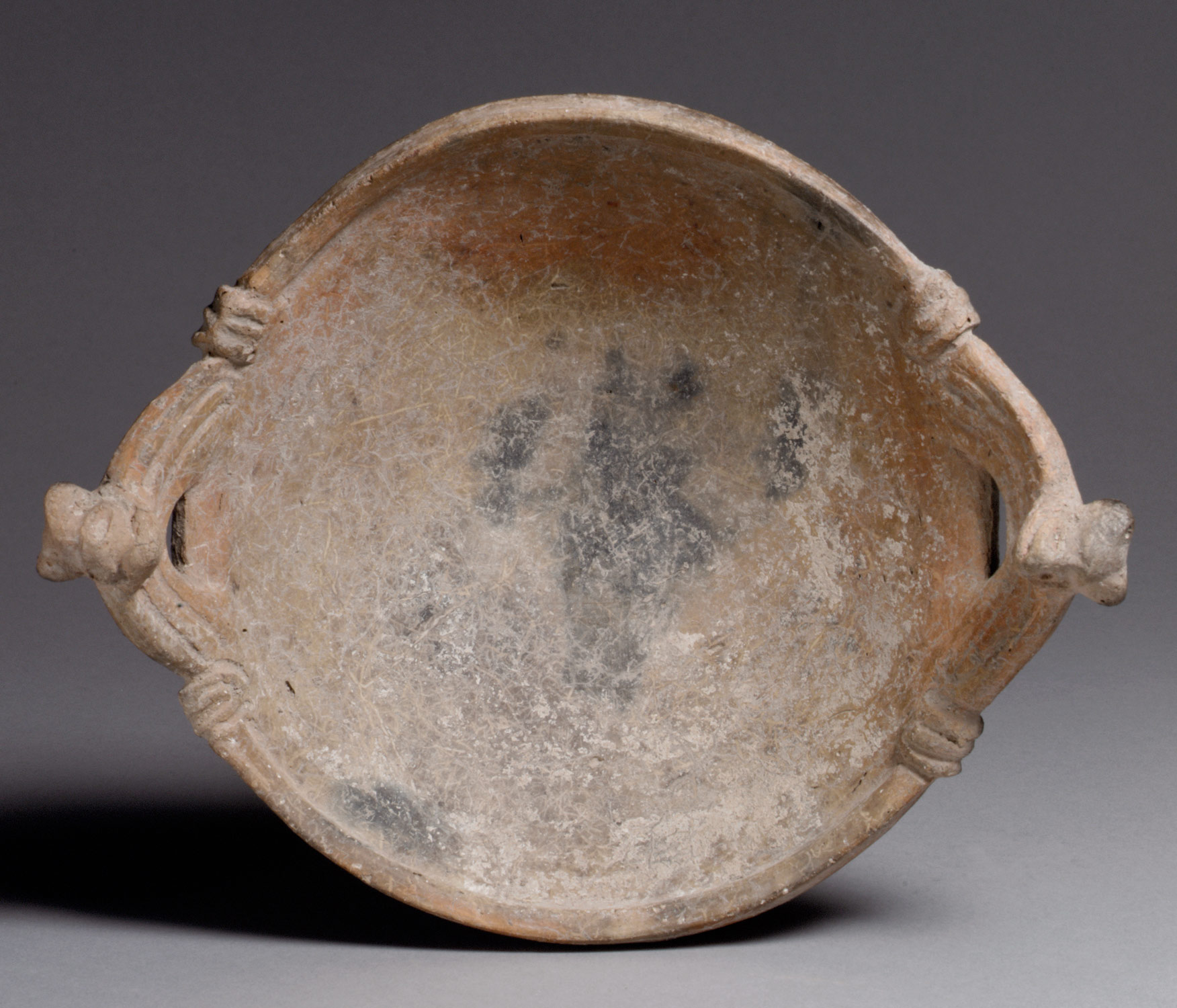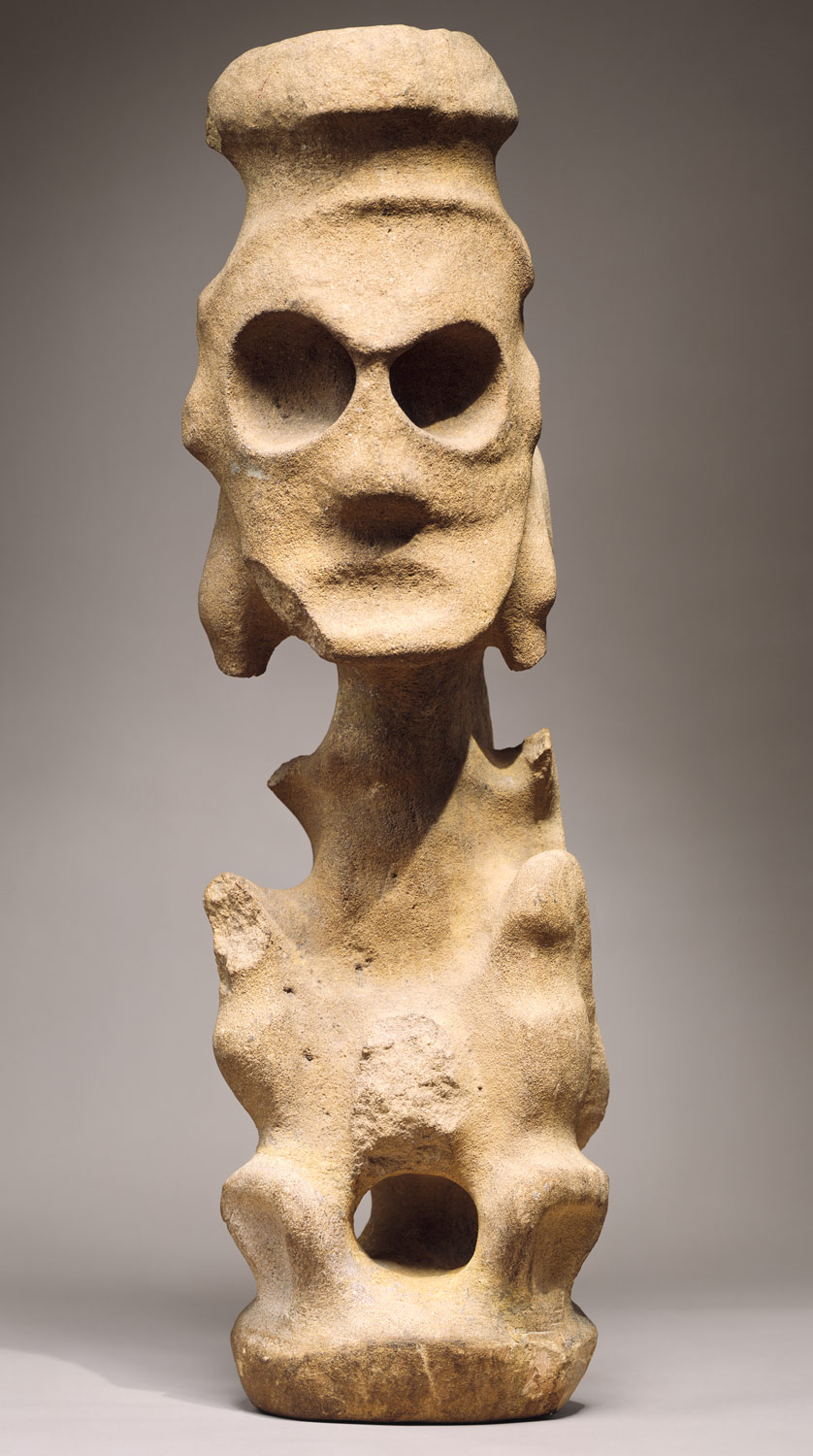Settlements in the region remain small; certain strong leaders or chiefs organize alliances that bring several centers together for brief periods. The architecture continues to consist largely of buildings of circular or rectangular shape with river cobble foundations and retaining walls. Lashed cane covered with adobe and thatch make up the rest of the structures. In Costa Rica, stone sculpture takes on three-dimensional human form, gaining prominence over functional forms such as metates, probably the result of changes in ritual activity. While the quality and quantity of ceramic manufacture generally diminish except for some elite wares, production of fine gold objects is at a peak. The Taíno people, one of the groups inhabiting the islands of the Greater Antilles, create works of great individuality in a variety of mediums.
Central America and the Caribbean, 1000–1400 A.D.
Timeline
1000 A.D.
1100 A.D.
NORTHERN COSTA RICA
EASTERN COSTA RICA
SOUTHERN COSTA RICA
PANAMA
GREATER ANTILLES
1100 A.D.
1200 A.D.
NORTHERN COSTA RICA
EASTERN COSTA RICA
SOUTHERN COSTA RICA
PANAMA
GREATER ANTILLES
1200 A.D.
1300 A.D.
NORTHERN COSTA RICA
EASTERN COSTA RICA
SOUTHERN COSTA RICA
PANAMA
GREATER ANTILLES
1300 A.D.
1400 A.D.
NORTHERN COSTA RICA
EASTERN COSTA RICA
SOUTHERN COSTA RICA
PANAMA
GREATER ANTILLES
Overview
Key Events
-
ca. 1000
Metalworkers in the Chiriquí region of southern Costa Rica and adjacent western Panama produce large numbers of spectacular gold ornaments, primarily pendants, among them frog and turtle depictions, as well as bat- and crocodile-headed figures.
-
ca. 1000
Figurative motifs that decorate earlier polychrome ceramics in Panama are replaced by increasingly abstract and geometric designs.
-
ca. 1050
Ornately carved ceremonial metates, important ritual/funerary objects in northern and central Costa Rica for at least the past thousand years, are produced only in limited numbers. Those made in the Atlantic Watershed are often round and feature atlantean figures.
-
ca. 1100
Sitio Conte, a major burial ground in central Panama for about 700 years, is no longer used as an elite cemetery.
-
ca. 1150
A new, technically accomplished ceramic ware, known as Tarragó Biscuit, is made in the Diquís region of southern Costa Rica. The thin-walled, buff-colored vessels of simple yet elegant shape or various animal forms have smooth, unpolished surfaces.
-
ca. 1200
Ceramic vessels of the Guanacaste-Nicoya region that earlier had Maya-style images now have white-slipped surfaces with Mexican design elements outlined in black.
-
ca. 1250
Highly stylized, almost two-dimensional stone figures from the Diquís area show strong affinities to Colombian forms in South America.
-
ca. 1300
The Taíno of the Greater Antilles islands in the Caribbean make ritual objects of wood, stone, and shell for use in ceremonies that include the taking of hallucinogenic snuff, or cohoba. Plazas and ballcourts are built and used in communal ritual activities.
-
ca. 1350
At Palmar Sur in the Diquís region, an important chief is entombed with eighty-eight gold ornaments; some appear to have been specifically made for burial.
-
ca. 1400
In central and eastern Costa Rica, thousands of small, seated human figures, known as sukias, are produced. Typically holding tubes, perhaps flutes, to their mouths, they may have been used in domestic contexts.
Citation
“Central America and the Caribbean, 1000–1400 A.D.” In Heilbrunn Timeline of Art History. New York: The Metropolitan Museum of Art, 2000–. http://www.metmuseum.org/toah/ht/?period=07®ion=cac (October 2001)
Related
Map
